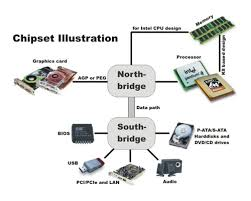
Breaking News
6.5x55 Swedish vs. 6.5 Creedmoor: The New 6.5mm Hotness
Best 7mm PRC Ammo: Hunting and Long-Distance Target Shooting
 Christmas Truce of 1914, World War I - For Sharing, For Peace
Christmas Truce of 1914, World War I - For Sharing, For Peace
Top Tech News
 EngineAI T800: Born to Disrupt! #EngineAI #robotics #newtechnology #newproduct
EngineAI T800: Born to Disrupt! #EngineAI #robotics #newtechnology #newproduct
 This Silicon Anode Breakthrough Could Mark A Turning Point For EV Batteries [Update]
This Silicon Anode Breakthrough Could Mark A Turning Point For EV Batteries [Update]
 Travel gadget promises to dry and iron your clothes – totally hands-free
Travel gadget promises to dry and iron your clothes – totally hands-free
 Perfect Aircrete, Kitchen Ingredients.
Perfect Aircrete, Kitchen Ingredients.
 Futuristic pixel-raising display lets you feel what's onscreen
Futuristic pixel-raising display lets you feel what's onscreen
 Cutting-Edge Facility Generates Pure Water and Hydrogen Fuel from Seawater for Mere Pennies
Cutting-Edge Facility Generates Pure Water and Hydrogen Fuel from Seawater for Mere Pennies
 This tiny dev board is packed with features for ambitious makers
This tiny dev board is packed with features for ambitious makers
 Scientists Discover Gel to Regrow Tooth Enamel
Scientists Discover Gel to Regrow Tooth Enamel
 Vitamin C and Dandelion Root Killing Cancer Cells -- as Former CDC Director Calls for COVID-19...
Vitamin C and Dandelion Root Killing Cancer Cells -- as Former CDC Director Calls for COVID-19...
 Galactic Brain: US firm plans space-based data centers, power grid to challenge China
Galactic Brain: US firm plans space-based data centers, power grid to challenge China
Smallest fully functional space probes now in orbit are precursors to interstellar chipsats

Small chip probes have been launched into low Earth orbit on June 23. Sprites are 'satellites on a chip,'. Research performed by Mason Peck and his team at Cornell University included Breakthrough Starshot's Zac Manchester Zac used a Kickstarter campaign to develop the concept in 2011.
These are the smallest fully functional space probes ever put into space. Each 3.5-by-3.5 centimeter probe built upon a single circuit board and weighing in at just four grams. A Sprite can contain solar panels, computers, communications capability and an array of sensors. The tiny spacecraft's electronics all function off the 100 milliwatts of electricity each generates.
Russian entrepreneur Yuri Milner has put $100 million into funding the first five years of the Breakthrough Starshot project. Th goal is to develop chips with a weight of roughly one gram and fit them to a lightweight sail before propelling them through space with a 100-billion watt laser.

 The State's Last Stand
The State's Last Stand


